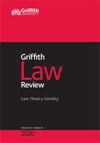Canada’s Truth and Reconciliation Commission: Assessing context, process, and critiques
IF 0.9
Q1 LAW
引用次数: 1
Abstract
Abstract The Truth and Reconciliation Commission (TRC) of Canada was a post-judicial exercise in truth telling after seven generations of residential schooling for Indigenous children. I outline some of the strengths and weaknesses of the process and engage with a range of critiques from settler and Indigenous academics and theorists. Section One covers the lengthy process of Survivors to seek redress for their experiences. Section Two covers the judicial processes that preceded the TRC. Section Three focuses on the TRC, and some of its strengths and weaknesses through three distinct but slightly overlapping lenses. I engage with settler critics who argue that the TRC was either too pro-Survivor, too anti-state, anti-school, and anti-church. I contrast this with Indigenous critiques from the resurgence school who saw the TRC as too close to government. I conclude with the transformative reconciliation school, advanced by Indigenous and settler academics working together to take the best aspects of the TRC and apply them.加拿大真相与和解委员会:评估背景、过程和批评
摘要加拿大真相与和解委员会(TRC)是经过七代土著儿童寄宿学校教育后的后司法实践。我概述了这个过程的一些优点和缺点,并参与了来自定居者和土著学者和理论家的一系列批评。第一节讲述了幸存者为其经历寻求补偿的漫长过程。第二节介绍了在TRC之前的司法程序。第三部分着重于TRC,以及它的一些优势和劣势,通过三个不同但略有重叠的镜头。我参与了一些定居者的批评,他们认为TRC要么太支持幸存者,要么太反国家,反学校,反教会。与此形成鲜明对比的是,来自复兴学派的土著批评人士认为,TRC与政府走得太近。最后,我将介绍由土著和定居者学者共同推动的变革性和解学校,他们将TRC的最佳方面加以利用并加以应用。
本文章由计算机程序翻译,如有差异,请以英文原文为准。
求助全文
约1分钟内获得全文
求助全文

 求助内容:
求助内容: 应助结果提醒方式:
应助结果提醒方式:


